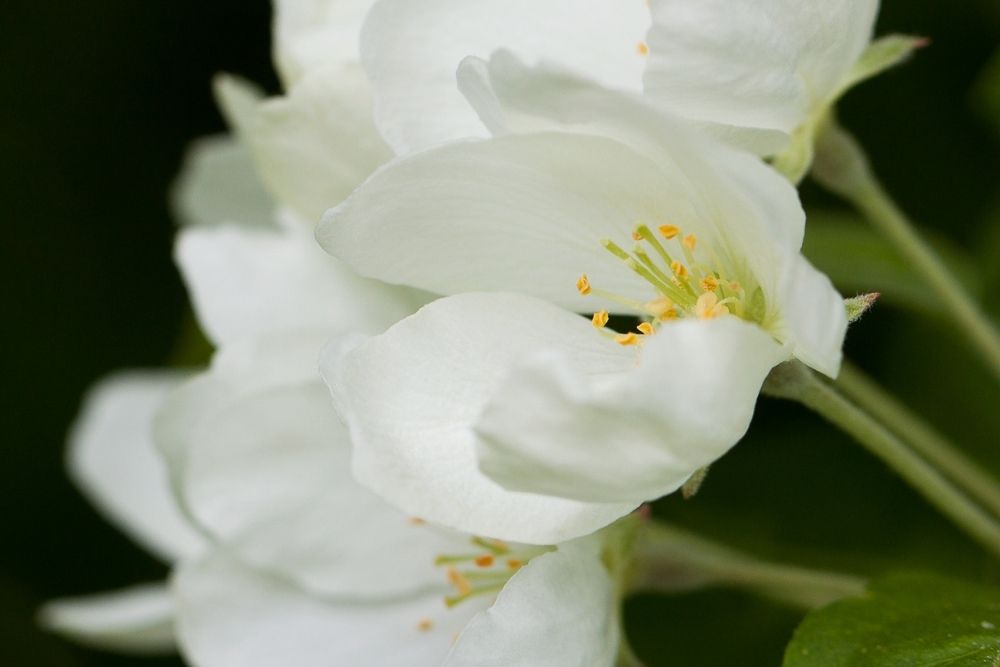
There’s no better way to welcome in the Spring season than the Peartree flower. The pear blossom has a symbolic meaning and has been marked in much of history and various cultures.
They are referenced in many poetic pieces, are considered a popular wedding decoration, and have been used as a unifier in the context of military campaigns, with the pear blossom symbolizing hope and lasting friendship.
There are many different types of pear flowers to choose from, and you don’t necessarily have to have a fruit-bearing tree to enjoy this elegant flower.
Some prefer a non-fruit bearing option as they are typically less ‘messy’ and take less time to care for. Moreover, the ones that contain a smaller-sized fruit are perfect for nature to snack on, so that lots of different wildlife can inhabit your urban environments.
Regardless of the variety, a pear tree flower will take around 3-10 years to blossom, and feature many different colors, the most classic behind a pearly white. So take a whistle-stop tour with our favorite pear flowers and get into the spirit of Springtime bliss.
1. Pyrus Calleryana ‘Chanticleer’ Tree
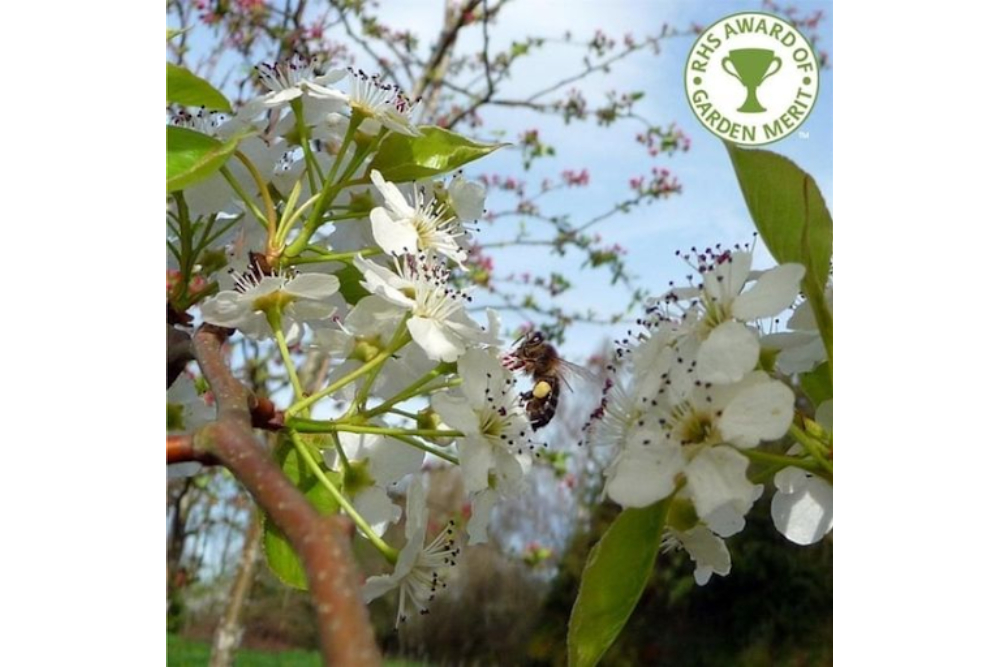
Here’s a fantastic small tree that grows to be just 5×3 meters tall. The word ‘Chanticleer’ comes from the French meaning to ‘sing clear’, which is a wonderful reference to the name that was given by the Nursery that was discovered in Ohio.
The Pyrus calleryana ‘Chanticleer’ has many beautiful features, with its glossy foliage that springs in April and May.
This particular flower is popular amongst the bee population and is popular amongst pollinating insects. This would be ideal as a small ornamental plant that could feature nicely in an urban garden.
2. Pyrus Elaeagnifolia Kotschyana
If you’re looking for a rare upright silver pear tree with pretty silver-grey leaves, you’ll love the Pyrus elaeagnifolia Kotschyana Tree. They feature small rounded fruits and are complemented with an abundance of wildlife-friendly critters.
This grows to be around 8 meters tall and has narrowly oval leaves that can grow up to 5 centimeters long. The petaled flowers are around 1.5-3 centimeters wide and typically appear in spring.
In terms of the best soil, this choice is ideal for a well-drained type, however, most soil types can be tolerated.
3. Red Williams Pear Tree
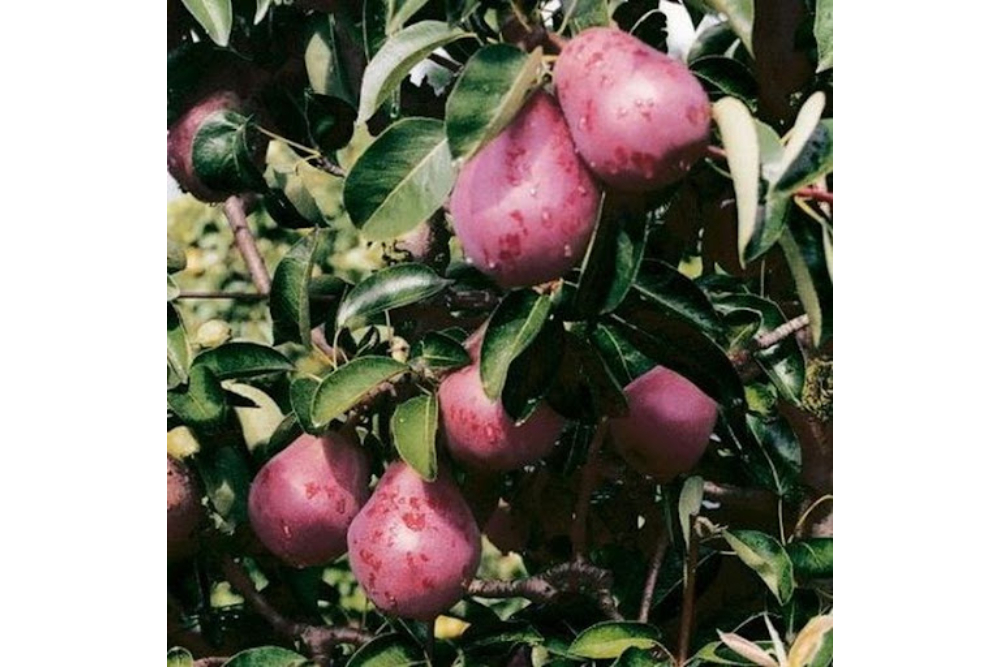
Here’s another popular pear tree that is an older variety and a must-have for pear lovers.
If you plant one of these magnificent trees you’ll be guaranteed to have large, sweet, smooth, and juicy pears that have unusual red skin.
The pretty spring flowers with their autumn foliage make this an ideal choice for ornamental gardens and allotments.
If you decide to get a Red Williams Pear Tree and plan on planting in spring or the summer months, water well and regularly, at least for the first few months, with less time spent watering in the autumn months.
And don’t forget to consistently prune this pear tree to ensure a healthy balanced shape!
4. Pyrus Salicifolia ‘Pendula’ Tree
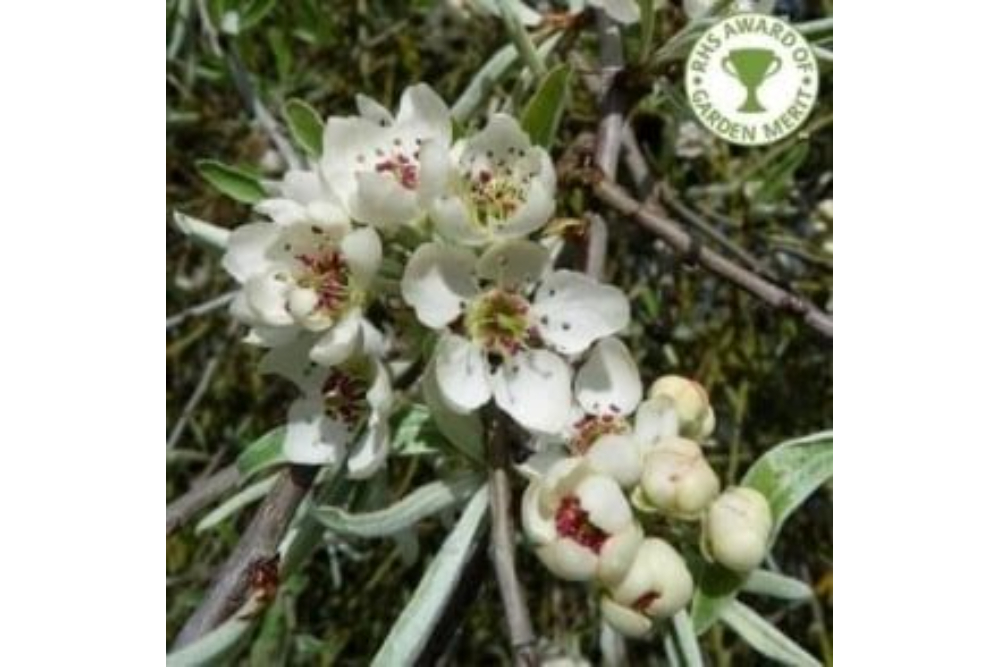
This Pyrus salicifolia ‘Pendula’ Tree is a lovely ornamental pear tree flower that has a naturally gorgeous grey-green leaf.
You’ll find the white flowers appear in April and May, and are popular with pollinating insects such as bees.
In the autumn, expect the foliage to turn a browned green color, with brown/green fruits that are typically eaten by birds.
The Pyrus salicifolia ‘Pendula’ Tree will grow to be about 4×4 meters, and requires a well-drained, moist site, but will still grow with most soil types.
And once planted, make sure to keep the surrounding area free from weeds and grass, especially for the first couple of seasons.
5. Pyrus Elaegnifolia ‘Silver Sails’ Tree

This pear flower tree takes its name from the pretty silver-green foliage that is shaped like sailboats. This silver pear tree produces decorative white flowers with leaves that have a coating of silky hairs that enhances the silvery look of the flower.
This grows to be about 5×5 meters and can tolerate most soil types, providing they are well-draining. In terms of pruning, the requirements are minimal and you should focus on damaged or awkwardly placed branches.
6. Bradford Pear Tree
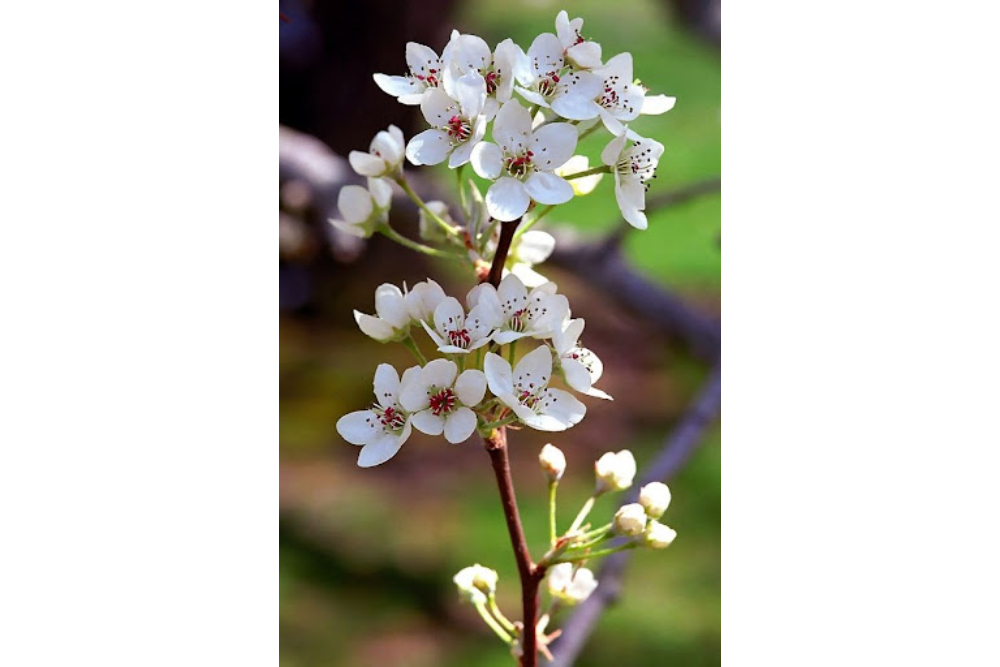
When it comes to fast-growing (at least in terms of pear flowers), the Bradford pear is one of the most popular medium-sized trees.
It looks stunning and would fit nicely in an allotment or urban garden setting. It is one of the oldest pear trees that typically grow well when the sun is out and with accompanying well-drained soil.
This type of pear tree can grow up to 40 feet and has an average lifespan of around 15 years.
You’ll find this tree has a wide abundance of white flowers that turns yellow late in fall.
The only downside to this tree is they can break quite easily, but the good news is that they are pollution resistant, making this a sound choice for weather-neutral areas that are not prone to snowfall and heavy winds.
7. Pyrus Calleryana ‘Capital’ Pear Tree
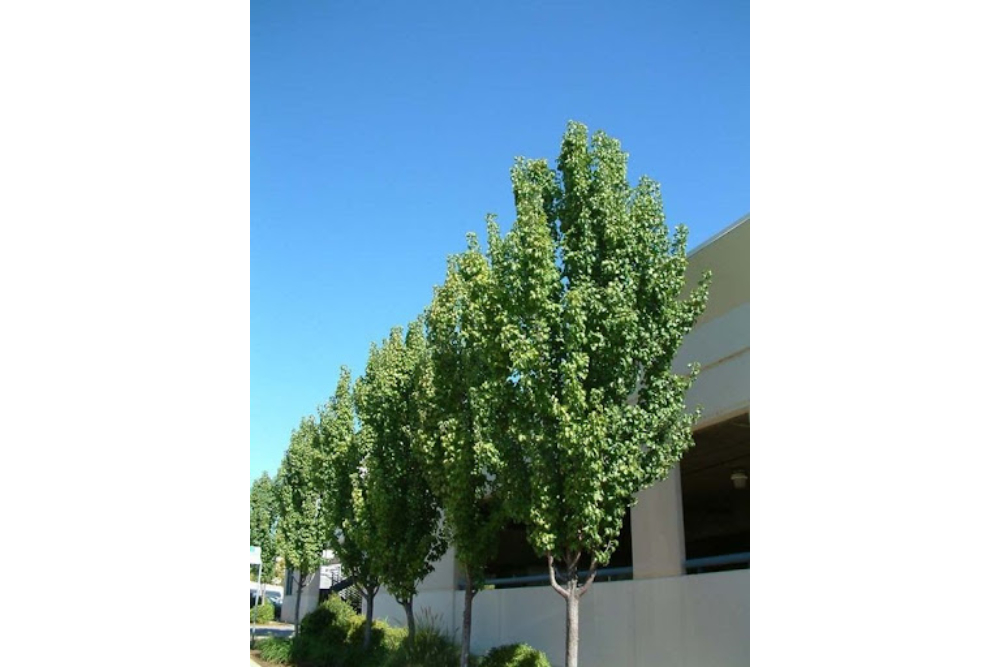
Here’s a pear tree that is narrow in shape, with a substantially tall complexion. This can grow to be around 35 feet in height and has a base spread of around 8-10 feet.
You’ll find white petalled flowers populating this pear tree and it displays wonderful healthy green foliage all year round.
When fall is beckoning, you’ll find the leaves turn to a reddish-bronze color that looks beautifully autumnal. This has so much character that can be enjoyed in its many stages of the seasons.
8. Redspire Pear Tree
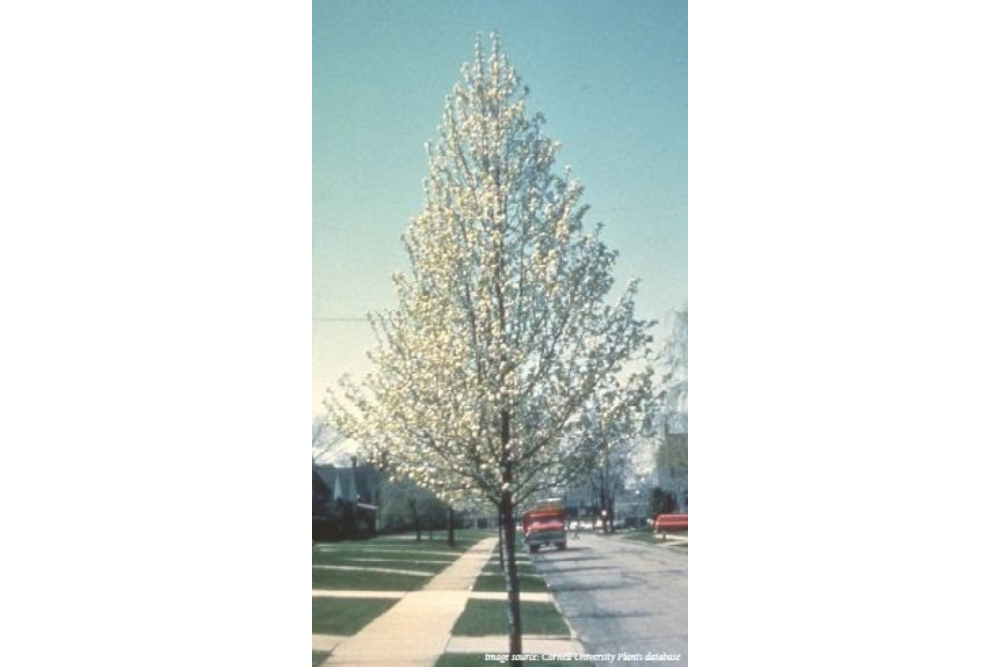
Take a look at a popular option that aligns the side of a residential street and urban close.
This is an ideal choice for this type of area due to its ease of maintenance and symmetrical growth that will not encroach on somebody’s property.
Being pyramid-shaped, the Redspire pear tree can grow to be up to 35 feet tall, with a relatively small base spread as it mostly grows upward and outwards from the top down. The leaves are glossy green, which turns yellow, gold, or a dark red in the fall.
RELATED: Ripe And Radiant: 24 Different Types Of European Trees
9. Aristocrat Pear Tree
We wanted to add a classic pear tree with a wonderful flower, and the Aristocrat tree fills this space nicely. This is an amazing all-year-round tree that features dark green flowers and shiny purple leaves from mid to late fall.
Unlike some of the other trees featured on our list, it’s a sturdy tree that would be a suitable option for wild weather environments that contain high winds or high snowfall.
It can grow up to 45 feet in length and is preferred for outdoor streets and residential areas. Just be wary of taking a sniff of the flower as they are known to have a foul-smelling odor!
10. Autumn Blaze Pear
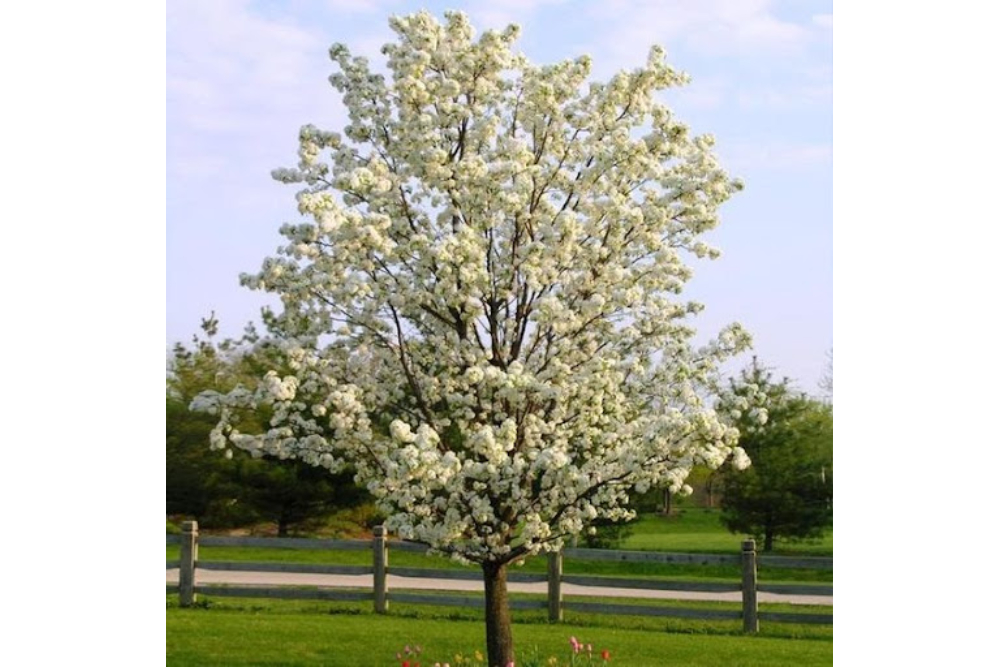
Staying with the large, round tree structures, the Autumn Blaze pear tree is known for its red leaves. Where the color changes to yellow-orange and deep burgundy colors throughout the seasons.
These trees are planted for the foliage in the fall foliage. But we still adore the white flowers that this tree blooms.
The Autumn Blaze can grow up to 45 feet tall and has a spread of over 30 feet. Similar to the Aristocrat, this is an ideal choice for harsh weather conditions as it won’t break easily. Especially throughout the winter.
Final Thoughts
If you’re looking to add a wonderful white and eclectic color scheme to your garden, with an additional option to grow some succulent fruits. You wouldn’t go wrong with some of the pear flowers and ornament trees we’ve listed above.
Having functionality and practicality is an underestimated feature of the pear, and as the world moves towards a sustainable way to live, having one of these can only help bring happiness to your garden.
However, we also adore some of the small fruit options for those looking at an easy-to-maintain pear flower. People can enjoy them for their many different colors and blossoms in the spring and autumn months.
Frequently Asked Questions
How Long Does It Take For A Pear Tree Flower To Bloom?
It takes around 3-10 years for a pear flower tree to bloom. If you want to shorten the time frame, make sure to choose an older potted tree instead of a bare root tree to grow faster.
How Deep Do I Need To Dig For A New Flowering Pear Tree?
This will depend on how you bought it and whether you purchased a bare root or in a pot.
If it’s in a pot you need the soil to be the same level when you put the tree in, and make a 2x wide hole. If you have a bare-root, be sure to not bury the graft union or the flare of the trunk.
Can You Plant A Flowering Pear Tree Near A Septic Tank?
We would always recommend speaking to the provider of the flowering pear tree for the best advice. However, in our experience, it’s not a good idea as the root will spread and damage the tank. Which is especially likely with some of the larger pear flower trees.
Editor’s Recommendations
Ripe And Radiant: 24 Different Types Of European Trees







